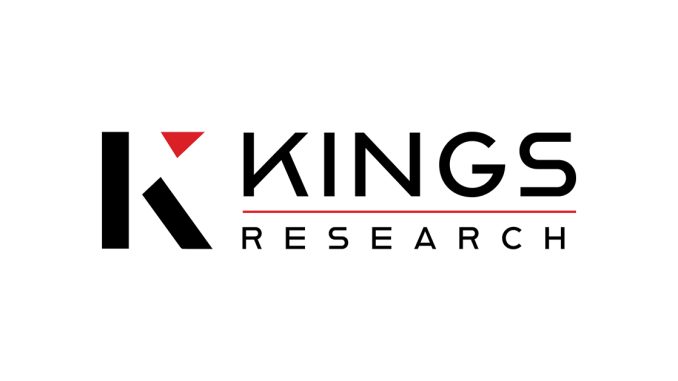
Der globale Markt für Drohnenmotoren gewinnt an Dynamik, da Fortschritte bei unbemannten Luftfahrzeugen (UAVs), die zunehmende Verbreitung in verschiedenen Branchen und die Nachfrage nach Hochleistungsmotoren das Wachstum beschleunigen. Laut einer aktuellen Branchenanalyse wurde das Marktvolumen im Jahr 2023 auf 2.641,8 Millionen US-Dollar geschätzt und soll von 2.900,5 Millionen US-Dollar im Jahr 2024 auf 6.073,4 Millionen US-Dollar bis 2031 steigen. Dies entspricht einer bemerkenswerten durchschnittlichen jährlichen Wachstumsrate (CAGR) von 11,13 Prozent im Prognosezeitraum.
Diese starke Entwicklung unterstreicht die wachsende Rolle von Drohnenmotoren als entscheidende Komponente für die Leistung, Effizienz und Anwendungsvielfalt von UAVs.
Marktausblick
Drohnenmotoren dienen als zentrale Antriebsquelle von UAVs und bestimmen Nutzlastkapazität, Stabilität, Flugzeit und Manövrierfähigkeit. Da Drohnen zunehmend in Branchen wie Landwirtschaft, Logistik, Verteidigung, Bauwesen und Fotografie eingesetzt werden, steigt die Nachfrage nach effizienten, leichten und langlebigen Motoren.
Der Aufstieg elektrischer Antriebssysteme und die kontinuierliche Weiterentwicklung bürstenloser Gleichstrommotoren haben ein Wettbewerbsumfeld geschaffen, in dem Hersteller bestrebt sind, leistungsstarke Lösungen zu kostengünstigen Preisen anzubieten. Die Weiterentwicklung von Batterien, die Miniaturisierung von Komponenten und die steigende Produktion von Verbraucherdrohnen treiben das Wachstum des globalen Marktes zusätzlich voran.
Wichtige Wachstumstreiber
Mehrere Faktoren treiben das beeindruckende Wachstum des Marktes für Drohnenmotoren voran:
- Steigende Nachfrage nach Drohnen im Militär- und Verteidigungsbereich für Überwachungs-, Aufklärungs- und taktische Missionen.
- Ausweitung kommerzieller Drohnenanwendungen auf Branchen wie Logistik, Präzisionslandwirtschaft, Bauüberwachung und Filmproduktion.
- Technologische Fortschritte bei bürstenlosen Gleichstrommotoren sorgen für höhere Effizienz und Haltbarkeit bei geringerem Wartungsbedarf.
- Zunehmende Akzeptanz von Drohnen bei Verbrauchern für Freizeit- und Luftbildfotografiezwecke.
- Der zunehmende Fokus auf urbane Luftmobilität und Drohnenlieferdienste schafft neue Grenzen für die Entwicklung von UAV-Motoren.
Marktsegmentierung
Der Markt für Drohnenmotoren ist nach Typ, Anwendung und Geografie segmentiert.
Nach Typ
- Bürsten-Gleichstrommotoren
- Bürstenlose Gleichstrommotoren
Bürstenlose Gleichstrommotoren dominieren das Segment aufgrund ihrer hohen Effizienz, ihrer längeren Lebensdauer und ihres hervorragenden Drehmoment-Gewichts-Verhältnisses. Sie werden sowohl in Privat- als auch in professionellen Drohnen häufig eingesetzt und sind daher die bevorzugte Wahl der Hersteller.
Nach Anwendung
- Drohnen für Verbraucher und Freizeit
- Kommerzielle Drohnen
- Militär- und Verteidigungsdrohnen
- Industrielle und landwirtschaftliche Drohnen
The commercial drone sector is expanding at a rapid pace, driven by increased use in logistics, aerial mapping, crop monitoring, and inspection services. Meanwhile, defense applications remain a major contributor to market growth due to ongoing investments in advanced UAV technologies by governments worldwide.
By Geography
- North America
- Europe
- Asia Pacific
- Latin America
- Middle East and Africa
North America currently leads the global market due to strong defense investments, widespread adoption of drones in commercial sectors, and the presence of major UAV and motor manufacturers. Asia Pacific, however, is projected to witness the fastest growth, fueled by rising drone production in China, India, Japan, and South Korea.
Regional Insights
North America
The United States and Canada are at the forefront of drone adoption, particularly in defense, logistics, and agriculture. Supportive regulations, investment in drone startups, and integration of UAVs into supply chains have created robust opportunities.
Europe
Countries such as Germany, the United Kingdom, and France are leading in commercial drone applications. The European market benefits from strict safety regulations, which have led to innovations in high-performance and energy-efficient drone motors.
Asia Pacific
China dominates drone manufacturing, with a strong ecosystem of suppliers, manufacturers, and technology developers. India is also emerging as a significant market due to government-backed programs encouraging drone usage in agriculture and infrastructure monitoring.
Latin America and Middle East and Africa
These regions are gradually adopting UAVs for applications in oil and gas, mining, agriculture, and border security. While the adoption rate is slower compared to other regions, the demand for reliable drone motors is increasing steadily.
Competitive Landscape
The global drone motor market is highly competitive, with a mix of established players and emerging startups. Companies are investing heavily in research and development to introduce lightweight, high-efficiency motors that cater to both consumer and commercial applications. Partnerships, acquisitions, and new product launches are common strategies being adopted.
Key players are focusing on:
- Enhancing torque and thrust capacity without increasing motor size.
- Improving durability and reducing heat generation for longer flight times.
- Expanding production capacities to meet rising global demand.
- Collaborating with drone manufacturers to develop customized motor solutions.
Future Outlook
The forecast for the drone motor market remains highly positive. The surge in drone deliveries, aerial mapping, disaster management, and smart farming is expected to push innovation in motor technology. Additionally, increasing use of drones in urban mobility projects and government-supported programs will further boost demand.
The next generation of drone motors will focus on higher efficiency, extended flight times, and reduced environmental impact. Innovations such as hybrid propulsion systems, advanced materials, and integration with AI-based flight systems will open new growth opportunities.
Key Highlights
- Market value reached USD 2,641.8 million in 2023.
- Expected to grow from USD 2,900.5 million in 2024 to USD 6,073.4 million by 2031.
- Projected CAGR of 11.13 percent during 2024 to 2031.
- North America leads the global market, while Asia Pacific shows the highest growth potential.
- Rising applications in agriculture, logistics, defense, and commercial sectors drive demand.
Conclusion
The global drone motor market is on a dynamic growth path, underpinned by technological advancements, broadening applications, and increasing investments in UAV technologies. From defense and commercial logistics to recreational and agricultural use, drone motors are becoming indispensable in driving innovation and efficiency in aerial solutions.
As the industry evolves, the emphasis will shift towards creating lighter, smarter, and more sustainable motors that align with the growing demands of the global drone ecosystem. With a strong growth outlook and emerging opportunities across regions, the drone motor market is set to remain a critical driver of UAV adoption and performance in the coming decade.
Browse to Related Reports:
Somatostatin Analogs Market Industry Trends and Insights
Somatostatin Analogs Market Growth Outlook by Regions
Dejar una contestacion